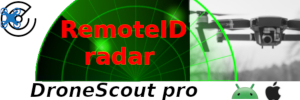Several quick thoughts:
1. If the drone is 100 feet away, you may think the ground is level between takeoff point and that place 100 feet from you, but unless you have a surveyor's transit and laser level, you can't be sure. Minor slopes are tough to detect, and you might very well have a difference in altitude of several feet. There are all sorts of optical illusions which can make you think two points are at the same height, when they are not. I've seen this with my own eyes at a local tourist attraction called the
Santa Cruz Mystery Spot.
2. The "de-tuning" mentioned is called "selective availability" and was constantly done by the USA government so our GPS system could not be used against us. Errors were fed into the system so the bad guys' missiles, using our own GPS against us, would miss the mark. The errors in altitude were extremely severe, often amounting to 100-200 feet, or more.
Even after selective availability was ended, towards the end of the Clinton years, the altitude accuracy was never that great, and it still drifts some. You might very well see this if you measure altitude over a known point at the beginning of your flights, and then again at the end of a fifteen minute or longer mission.
Finally, one person mentioned "dual GPS." I don't know about that, but if you want accuracy down to a centimeter, you invest in a differential GPS receiver. I don't know if this can be hacked into any DJI drones, but I have an old Garmin that can use it. The way it works is you feed your GPS a correction signal from a nearby GPS receiver that is sitting directly on a reference monument or benchmark (i.e., a location whose lat/long/altitude are perfectly known). If the reference point is reasonably close (within a few miles) all the little errors in the GPS signal from satellite perturbations, propagation delay, temperature changes, will affect both points in the same manner. Because of these imperfections, the reference GPS will see itself moving around, when it obviously knows it is not. It uses this phantom motion to send out a correction signal to your GPS receiver.
Using this technology, you can get GPS measurements that are accurate to within centimeters, or less.
Read about it here:
Differential GPS









